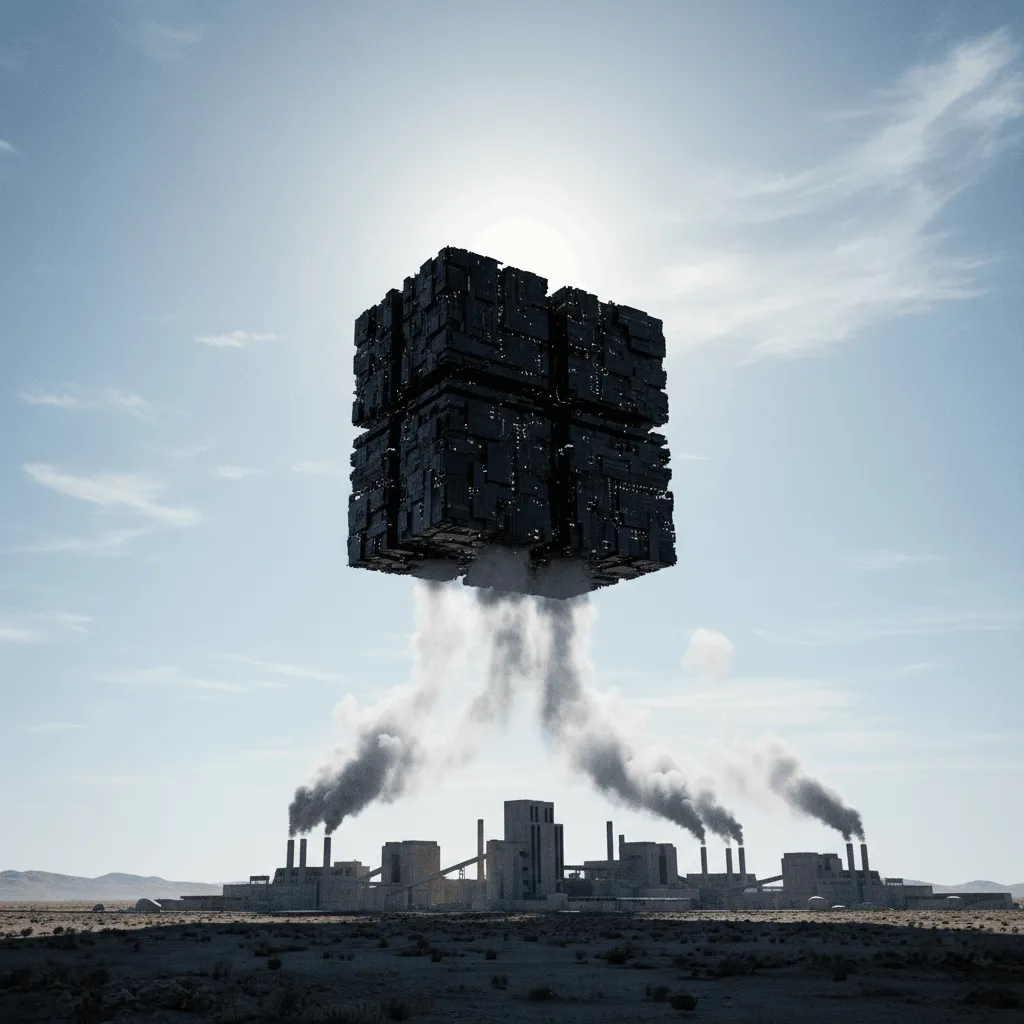Manufacturing engineers confront mounting pressures: consumers demand perfect products delivered faster and cheaper than ever before, while labor shortages make traditional manual processes increasingly unsustainable. A single operational inefficiency or production error can trigger costly delays, damage brand reputation, and erode customer satisfaction built over decades.
Machine vision systems offer a cost-effective solution that addresses these core manufacturing challenges. By enabling automated systems to "see," interpret, and act on visual data with precision beyond human vision, these computer vision applications are transforming how the manufacturing industry approaches quality control, robotic guidance, process optimization, and supply chain management.
This guide explores 20 real-world machine vision applications already changing production lines across industries, from pharmaceutical tablet inspection to automotive assembly verification.
Understanding Machine Vision Technology Machine vision technology combines cameras, sensors, and specialized image processing software to capture, process, and interpret images, enabling computers to perform image processing tasks traditionally requiring human vision. Unlike basic industrial automation that follows rigid programming, modern computer vision systems integrate artificial intelligence and machine learning to understand, interpret, and learn from visual data in real-time decision-making scenarios.
The technology operates through three coordinated phases:
Data Acquisition captures visual data using machine vision cameras and specialized sensors with optimized lighting to ensure clear, consistent image quality.Image Processing transforms raw visual data through computer vision algorithms, including object detection, pattern recognition, and Convolutional Neural Networks (CNNs).Interpretation and Actions analyzes extracted features to make decisions, trigger actions like robotic guidance or product rejection, and log relevant information for traceability and process optimization.Core Machine Vision Technologies Different machine vision solutions address specific manufacturing needs:
2D Cameras excel at surface defect detection, label inspection, and optical character recognition.3D Profilers (laser triangulation, structured light, stereo vision) enable dimensional gauging and robotic guidance for complex assemblies. Hyperspectral Imaging captures wide wavelength ranges for material verification and chemical composition analysis. AI/Deep Learning Algorithms interpret complex visual data, recognize objects, and adapt to manufacturing variations. Specialized Lighting Systems optimize image capture by enhancing contrast and revealing hidden features in controlled settings. Quality Control & Defect Detection Applications Quality managers understand that catching defects early prevents expensive downstream problems. Machine vision systems detect imperfections with a consistency and precision that surpass human inspectors, while generating valuable data for process improvement and productivity gains.
1. Automated Surface Flaw Detection Automated inspection systems identify scratches, cracks, discoloration, and contamination on product surfaces. Advanced machine vision systems like VisionStream use deep learning to accurately identify complex anomalies regardless of location, size, or shape.
These vision systems classify defects by type and grade, enabling manufacturers to make nuanced decisions about production line stoppage based on specific defect thresholds. The detailed classification data reveals defect patterns that facilitate predictive quality management—helping identify root causes earlier in production and implement targeted corrective actions before problems escalate.
2. Dimensional Inspection and Gauging Non-contact measurement systems verify component dimensions to micron-level precision, measuring diameter, bore, and drill holes in machined parts simultaneously at high speeds. 3D scanning systems capture detailed point cloud data for dimensional analysis of correct components.
This capability supports the creation of accurate digital twins—detailed digital representations that enable virtual testing, real-time comparison against ideal models, and advanced simulations. Quality control thus evolves from purely physical visual inspections to comprehensive digital verification, enhancing design, manufacturing, and maintenance processes.
3. Packaging Integrity Verification 360-degree bottle inspection systems verify correct product placement, cap closure, seal integrity, label positioning, and print quality. This application is particularly beneficial for food packaging and pharmaceutical manufacturers facing strict regulatory requirements.
Early detection of packaging issues significantly reduces product recall risk, protecting both financial performance and brand reputation. Machine vision changes packaging quality from reactive recall management to proactive prevention.
4. Fill Level Inspection Real-time fill level measurement prevents both overfilling and underfilling in containers, ensuring product consistency while minimizing material waste. These systems optimize material usage and prevent customer dissatisfaction caused by inconsistent product quantities.
5. Pharmaceutical Tablet Inspection Tablet inspection systems verify correct color, dimensions, and wholeness while ensuring accurate counting before packaging. As tablets move through production lines, specialized software identifies broken, malformed, or incorrectly sized tablets, automatically rejecting faulty containers.
This application exemplifies machine vision's role in industries where product integrity directly impacts human health, addressing both efficiency requirements and ethical obligations for regulatory compliance.
6. Circuit Board Inspection PCB inspection systems use computer vision to read barcodes for identification while detecting manufacturing defects. Advanced 3D vision system configurations construct complete component models to identify faulty connector pins that could cause catastrophic failures.
Machine vision enables manufacturing of increasingly complex and miniaturized electronic components that manual inspection simply cannot adequately verify. This capability supports innovation in electronics design by making intricate manufacturing processes feasible.
7. Foreign Object and Contamination Detection Contamination detection systems identify unwanted foreign objects and visual inconsistencies, which is particularly critical in food manufacturing . These systems ensure food safety and quality while preventing costly recalls that could impact consumer health.
8. Lot and Date Code Verification Optical character recognition systems inspect lot numbers, expiration dates, and manufacturing information on various packaging types. These systems must operate at high speeds—often requiring inspection times under 171.4 milliseconds for lines processing 350 bottles per minute.
Accurate code verification enables granular product tracking throughout the supply chain, supporting rapid recall execution and robust anti-counterfeiting measures that strengthen supply chain integrity and inventory management.
9. Leaking Container Detection Leak detection systems identify compromised seals in reusable containers like beer kegs after cleaning and refilling. Overhead cameras inspect container necks for foam indicators of leaking seals, automatically rejecting faulty containers at lower cost than downstream detection.
Technical challenges include differentiating residual rinse water from actual product leakage, requiring custom programming and optimized lighting variations for consistent image processing interpretation.
Assembly, Guidance & Automation Applications Production engineers implementing industrial automation require vision applications that enable robotic arms to adapt to dynamic manufacturing environments. Computer vision provides robots with "sight" that improves precision and flexibility in assembly operations.
10. Robotic Guidance for Precision Assembly Vision-guided robotic systems integrate 2D and 3D cameras with specialized software to help robotic arms locate objects, measure dimensions, and align components in real-time. Computer vision algorithms interpret visual data, allowing robots to recognize objects and adapt to environmental changes.
This capability enables human-robot collaboration (cobots) by allowing robots to perceive their environment and human presence, creating safer collaborative workspaces. Machine vision solutions facilitate flexible production lines that can be rapidly reconfigured for different products—a fundamental Industry 4.0 principle.
11. Automated Pick-and-Place Operations Vision-guided pick-and-place systems enable robotic arms to accurately locate, pick up, and position intricate components. These applications sort and categorize parts based on size, shape, and color while maintaining high accuracy in high-speed production environments and improving resource efficiency.
12. Component Presence and Orientation Verification Component verification systems ensure all necessary parts are present and correctly oriented before assembly, preventing costly errors and reducing rework requirements. Real-time position verification maintains assembly quality and final product integrity.
13. Assembly Verification Spatial relationship verification confirms correct distances, angles, and alignments between assembled components rather than just measuring individual parts. This ensures final products meet design specifications and functional requirements, preventing failures from incorrect assembly.
Identification, Tracking & Logistics Applications Supply chain managers need comprehensive visibility into product movement and inventory management status. Computer vision systems enable automated identification and tracking that significantly enhances supply chain operations and traceability throughout the manufacturing process.
14. Barcode and QR Code Reading Automated code reading systems capture unique identifiers like Global Trade Item Numbers (GTINs) for product tracking and logistics operations. These systems automate routing, tracking, and shipping while reducing human error in manual scanning processes.
15. Product Traceability and Supply Chain Management Comprehensive tracking systems monitor products from production through shipping and sale, providing real-time location data and enabling quick detection of delays or shipping errors. When problems occur, these vision systems trace issues back to their source with relevant information.
The generated data enables supply chain analytics that identify bottlenecks, predict disruptions, optimize logistics pathways, and proactively mitigate risks like counterfeiting. This converts disconnected supply chain steps into a transparent, data-driven ecosystem that improves the flow of goods.
16. Automated Sorting and Classification Vision-based sorting systems categorize parts based on visual characteristics like shape, texture, and color without requiring pre-labeled identifiers. This offers flexibility to adapt to different products and production lines while improving material handling efficiency and worker productivity.
Process Optimization & Predictive Maintenance Applications Plant managers pursuing operational excellence need computer vision systems that provide real-time insights and enable proactive maintenance strategies. Machine vision technology changes manufacturing from reactive problem-solving to data-driven optimization.
17. Real-time Process Monitoring and Control Continuous monitoring systems analyze production processes, identify patterns, and provide immediate feedback for workflow optimization. These systems detect defects as they occur, enabling immediate corrective actions and communicating directly with robotic systems and PLCs for real-time parameter adjustments.
Machine vision technology changes manufacturing from reactive troubleshooting to proactive optimization, continuously feeding visual data into analytics engines that enable predictive quality control and dynamic process fine-tuning.
18. Predictive Maintenance Triggering Equipment monitoring systems use cameras and infrared sensors to continuously assess equipment health, predicting failures and triggering proactive maintenance. This approach reduces unexpected downtime while extending equipment lifespan and optimizing maintenance schedules.
19. Material Identification and Composition Analysis Hyperspectral imaging systems identify materials and analyze chemical compositions beyond visible light spectrum capabilities. These systems ensure correct material usage, verify quality against specifications, and detect impurities invisible to human inspection.
20. Safety Monitoring and Anomaly Detection Safety monitoring systems track personnel and equipment movement, using deep learning artificial intelligence to predict dangerous interactions and prevent accidents. Real-time cameras and video footage analytics help manufacturing equipment operate with improved safety and efficiency.
This technology changes safety management from reactive incident response to proactive risk management, informing ergonomic improvements and optimizing workstation layouts for healthier work environments.
Implementation Strategy for Manufacturing Success Successfully deploying machine vision solutions requires strategic planning that addresses both technical and operational challenges. Manufacturing leaders should consider these critical factors when implementing computer vision applications:
Technical Considerations Data Requirements: Computer vision algorithms require sufficient, diverse images for training. Complex defects varying in location, size, and appearance present significant algorithm development challenges for image processing software.System Integration: Communication with existing PLCs, robotic systems, and industrial protocols is essential for full system potential. Poor interoperability can severely limit machine vision system effectiveness. Environmental Control: Proper lighting ensures optimal image capture and consistent results. Vision applications such as differentiating similar liquids or inspecting translucent materials require careful testing and lighting customization in controlled settings. Precision and Calibration: Achieving sub-pixel accuracy requires careful system calibration to traceable standards, often involving rigorous measurement studies for object detection accuracy. Strategic Implementation Approach Start with High-Impact Areas: Focus initial implementation on critical pain points like production bottlenecks, high-volume repetitive tasks, or areas affected by labor shortages where trained workers are unavailable.Phased Deployment: Begin with pilot projects to validate machine vision technology effectiveness and build internal expertise before scaling across operations. Cross-Functional Teams: Assemble teams with manufacturing process expertise, computer vision knowledge, data science capabilities, and IT integration skills. Data Integration Planning: Design how machine vision system data will integrate with existing MES, ERP, and quality management systems for process optimization and inventory management. Platforms like QualityOS help manufacturers centralize quality data from multiple vision systems into unified dashboards. ROI and Competitive Advantage Investing in machine vision technology delivers measurable returns across multiple operational areas:
Enhanced Productivity: Computer vision systems perform thousands of operations per minute, enabling 100% automated processing and eliminating bottlenecks while maintaining consistent performance over extended periods to increase productivity. Waste Reduction: Early problem identification, precise measurement control, and accurate root cause analysis reduce scrap rates and optimize raw material usage, improving resource efficiency. Quality Improvement: Visual analysis of minute details invisible to human operators ensures only highest-quality products reach market, reducing recalls and protecting brand reputation while enhancing customer satisfaction. Regulatory Compliance: Data generation throughout the product lifecycle ensures traceability essential for pharmaceuticals, medical devices, automotive, and food industries. Labor Optimization: Automated inspection tasks allow skilled workers to focus on higher-value activities while addressing labor shortage challenges in manufacturing. Together, these benefits create operational excellence that provides significant competitive advantage. Manufacturers can produce higher quality goods at reduced costs with greater speed and reliability while maintaining regulatory compliance and improving workplace safety.
Future-Proofing Manufacturing Operations Computer vision technology continues advancing rapidly:
3D Vision Applications including laser triangulation and Time-of-Flight sensors enable more precise volumetric analysis of complex assemblies. Hyperspectral Imaging opens new possibilities for material identification and chemical composition analysis. Artificial Intelligence and Deep Learning Integration enhances accuracy and adaptability for handling complex, unstructured visual data. The future of manufacturing lies in the symbiotic relationship between industrial automation and data intelligence. Machine vision systems serve as the primary sensor feeding visual data into analytical systems, creating powerful feedback loops where automation generates data that informs optimization strategies, leading to more sophisticated and efficient automation in smart cities and beyond manufacturing.
Planning Your Implementation Manufacturing leaders should view machine vision technology investment not as isolated projects but as strategic development of core digital infrastructure. This "vision infrastructure" provides scalability and interoperability for multiple current and future computer vision applications, transforming factories into intelligent entities capable of continuous adaptation and optimization.
Begin by identifying your highest-impact pain points—whether product quality issues, labor shortages challenges, or throughput limitations. Partner with experienced machine vision solutions providers who understand your specific manufacturing industry requirements and can guide implementation from pilot projects through full-scale deployment.
The manufacturers who adopt computer vision systems strategically today will establish the foundation for tomorrow's smart factories, positioning themselves advantageously in an increasingly competitive global market.
Improve Your Quality with Machine Vision Eliminate human error and speed up quality checks by bringing machine vision into your inspection workflows. Work with our engineers to implement a solution that fits your line and scales with your needs.




